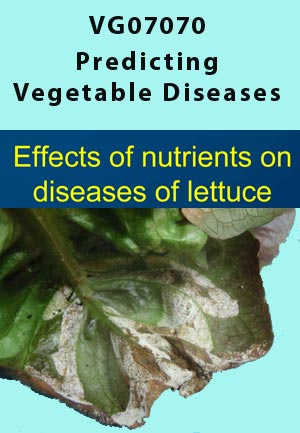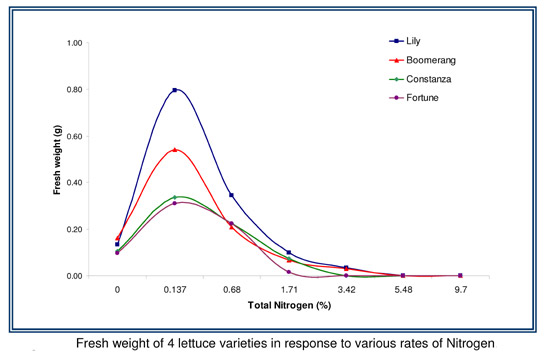|
|
The objective of this study was to determine if the rate and form of Nitrogen increases lettuce susceptibility to disease. Initial experiments were conducted to determine the susceptibility of 21 lettuce varieties to Downy Mildew. Varieties were deemed resistant, moderately resistant and susceptible. Four varieties were used to assess the growth of lettuce in response to various rates of Nitrogen prior to inoculation studies with Downy Mildew. Lettuce seedlings were watered with Potassium nitrate, a commonly used nursery fertilizer. Lettuce seedlings were inoculated with Downy Mildew and the incidence and disease severity were assessed 20 days after tinoculation. Fresh weight was also recorded.
Results :
Acknowledgments : The project VG07070 was formed by Government agencies, private industry, universities and international researchers, to benchmark disease predictive models for major vegetable crops. Funding was provided by Australian vegetable growers (through the R & D levy) and the Department of Primary Industries, Victoria. The Australian Government provides matched funding for all HAL’s R&D activities. |
||||||
|


